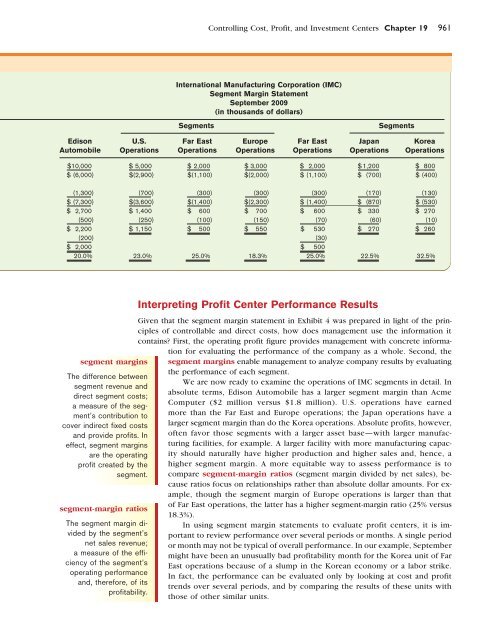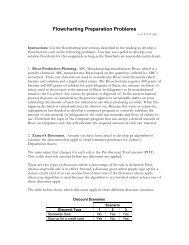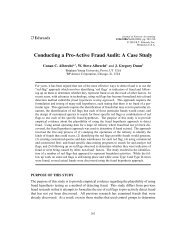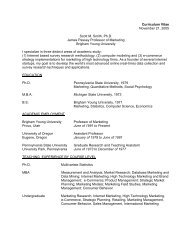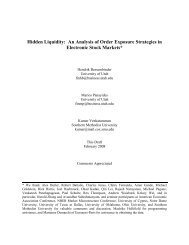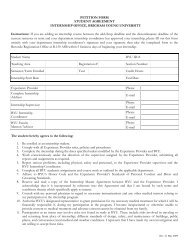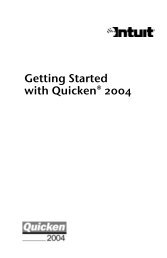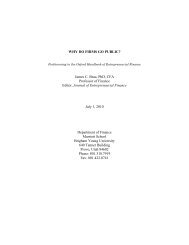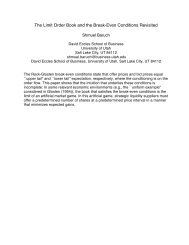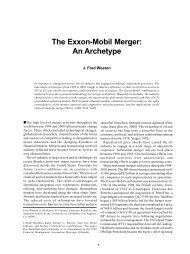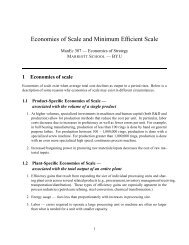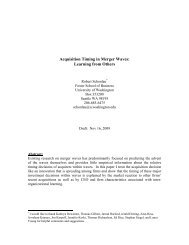Albrecht 19.pdf - Marriott School
Albrecht 19.pdf - Marriott School
Albrecht 19.pdf - Marriott School
Create successful ePaper yourself
Turn your PDF publications into a flip-book with our unique Google optimized e-Paper software.
76154_23_ch19_p942-1006.qxd 3/1/07 3:35 PM Page 961<br />
Controlling Cost, Profit, and Investment Centers Chapter 19 961<br />
International Manufacturing Corporation (IMC)<br />
Segment Margin Statement<br />
September 2009<br />
(in thousands of dollars)<br />
Segments<br />
Segments<br />
Edison U.S. Far East Europe Far East Japan Korea<br />
Automobile Operations Operations Operations Operations Operations Operations<br />
$10,000 $ 5,000 $ 2,000 $ 3,000 $ 2,000 $ 1,200 $ 800<br />
$ (6,000) $(2,900) $(1,100) $(2,000) $ (1,100) $ (700) $ (400)<br />
(1,300) (700) (300) (300) (300) (170) (130)<br />
$ (7,300) $(3,600) $(1,400) $(2,300) $ (1,400) $ (870) $ (530)<br />
$ 2,700 $ 1,400 $ 600 $ 700 $ 600 $ 330 $ 270<br />
(500) (250) (100) (150) (70) (60) (10)<br />
$ 2,200 $ 1,150 $ 500 $ 550 $ 530 $ 270 $ 260<br />
(200) (30)<br />
$ 2,000 $ 500<br />
20.0% 23.0% 25.0% 18.3% 25.0% 22.5% 32.5%<br />
segment margins<br />
The difference between<br />
segment revenue and<br />
direct segment costs;<br />
a measure of the segment’s<br />
contribution to<br />
cover indirect fixed costs<br />
and provide profits. In<br />
effect, segment margins<br />
are the operating<br />
profit created by the<br />
segment.<br />
segment-margin ratios<br />
The segment margin divided<br />
by the segment’s<br />
net sales revenue;<br />
a measure of the efficiency<br />
of the segment’s<br />
operating performance<br />
and, therefore, of its<br />
profitability.<br />
Interpreting Profit Center Performance Results<br />
Given that the segment margin statement in Exhibit 4 was prepared in light of the principles<br />
of controllable and direct costs, how does management use the information it<br />
contains First, the operating profit figure provides management with concrete information<br />
for evaluating the performance of the company as a whole. Second, the<br />
segment margins enable management to analyze company results by evaluating<br />
the performance of each segment.<br />
We are now ready to examine the operations of IMC segments in detail. In<br />
absolute terms, Edison Automobile has a larger segment margin than Acme<br />
Computer ($2 million versus $1.8 million). U.S. operations have earned<br />
more than the Far East and Europe operations; the Japan operations have a<br />
larger segment margin than do the Korea operations. Absolute profits, however,<br />
often favor those segments with a larger asset base—with larger manufacturing<br />
facilities, for example. A larger facility with more manufacturing capacity<br />
should naturally have higher production and higher sales and, hence, a<br />
higher segment margin. A more equitable way to assess performance is to<br />
compare segment-margin ratios (segment margin divided by net sales), because<br />
ratios focus on relationships rather than absolute dollar amounts. For example,<br />
though the segment margin of Europe operations is larger than that<br />
of Far East operations, the latter has a higher segment-margin ratio (25% versus<br />
18.3%).<br />
In using segment margin statements to evaluate profit centers, it is important<br />
to review performance over several periods or months. A single period<br />
or month may not be typical of overall performance. In our example, September<br />
might have been an unusually bad profitability month for the Korea unit of Far<br />
East operations because of a slump in the Korean economy or a labor strike.<br />
In fact, the performance can be evaluated only by looking at cost and profit<br />
trends over several periods, and by comparing the results of these units with<br />
those of other similar units.


